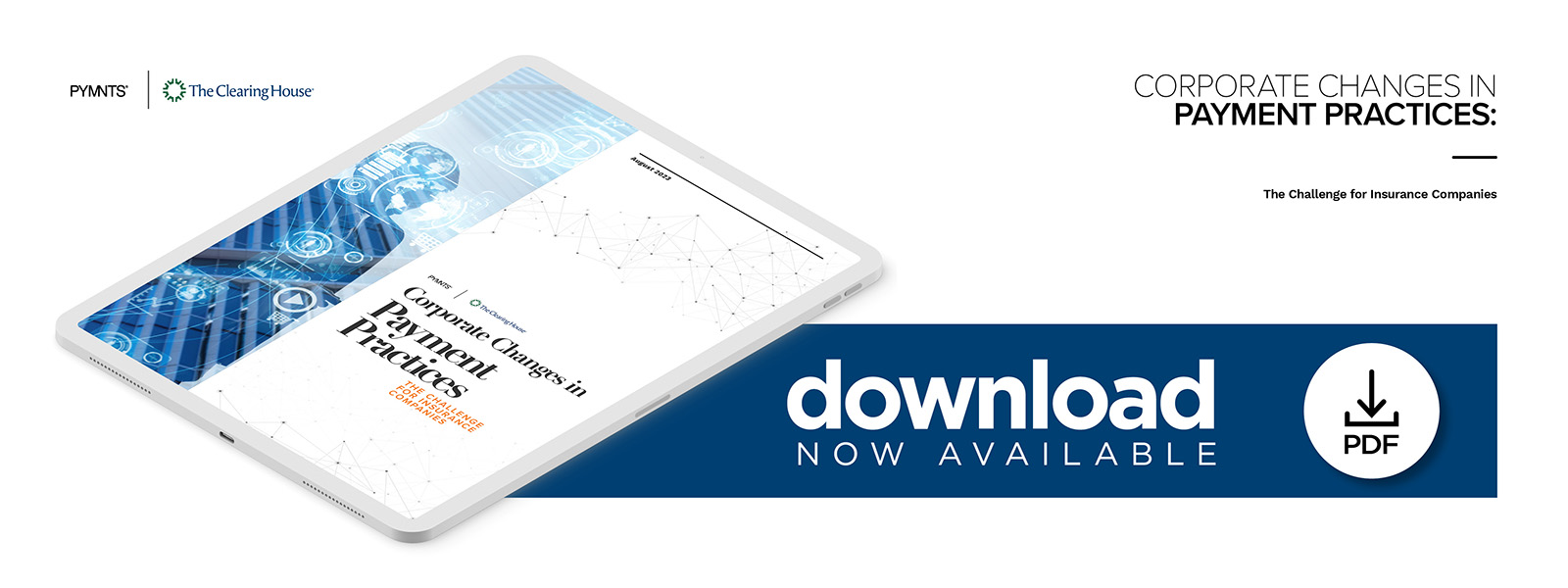Small Insurers Lag in Adopting Real-Time Payments, but Plan a 2024 Catch Up
Insurance companies are embracing real-time payments when collecting customer premiums or receiving payments from other businesses. Even though 80% of firms use real-time payments, they account for just 16% of transactions, behind automated clearing house (ACH) and wire transfers.
The forecast for growth in real-time payments is optimistic — though there are some caveats. Thirty-eight percent of all surveyed firms plan to increase use of real-time payments, and 25% anticipate increases in the real-time payments received. Forty-six percent of midsized insurers — which generate annual revenues between $500 million and $1 billion — are more eagerly planning to grow real-time payments activity compared to large and small insurers.
In “Corporate Changes in Payment Practices: The Challenge for Small Insurance Companies,” a PYMNTS and The Clearing House collaboration, we surveyed 125 insurance executives at firms generating annual revenues of at least $100 million to understand how these companies are thinking about their payment practices and sentiments around moving from traditional payment rails to faster ones such as real-time payments.
Some other key findings from the report include:
Just one-third of small insurance companies say making real-time payments is essential for business today, significantly trailing larger firms.
While 69% of large insurance firms consider the ability to make real-time payments very or extremely important for business, just 33% of small insurance companies say the same. However, there is less disparity when it comes to the ability to receive real-time payments.
Speedy and timely payments are the most important reason to adopt real-time payments.
PYMNTS found that 32% of large insurers, 40% of midsized insurers and 30% of small insurers list fast payments as a top priority. Establishing and maintaining good relationships with suppliers was the second-most important factor. These relationships were more important for smaller insurance firms than for medium and large insurers.
Small insurance companies will rely mostly on digital giants and FinTechs to add more real-time payment solutions.
Firms of all sizes are likely to rely on FinTechs for real-time payments solutions. We found that 90% of large firms will likely turn to FinTechs for real-time payments solutions, compared to 77% of small insurance companies. Small firms show relatively stronger preference for digital giants, such as Stripe and PayPal, and third-party processors than midsized and large firms.
These sentiments signal a promising year for third parties that provide real-time payments solutions, as insurance companies consider replacing in-house solutions or treasury management systems with those offered by FinTech partners, tech giants, card networks or banks. Download the report to learn more about how and why small insurance companies are drawn to real-time payments — and what concerns hinder adoption.


